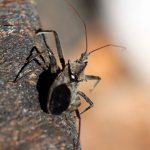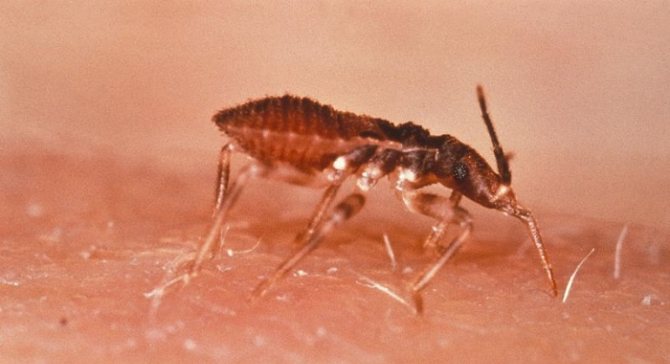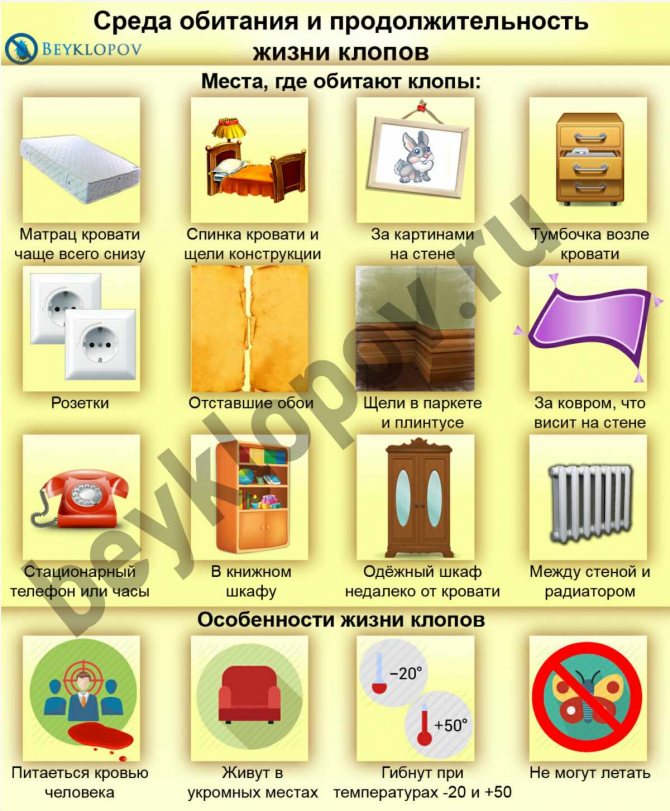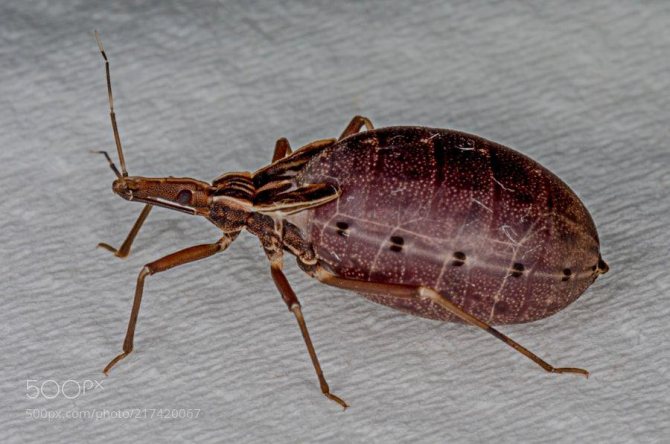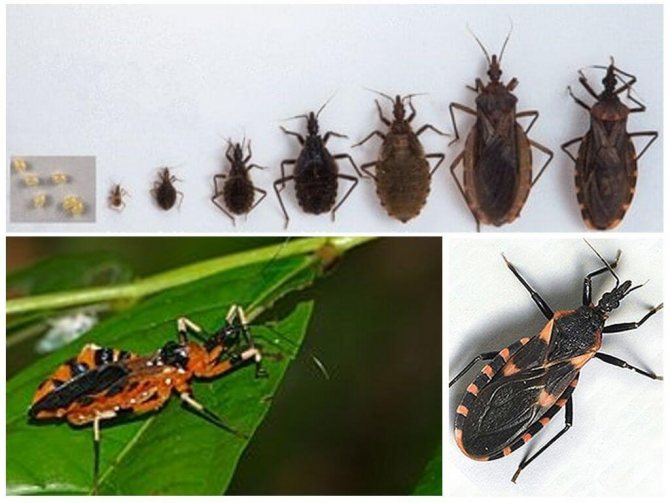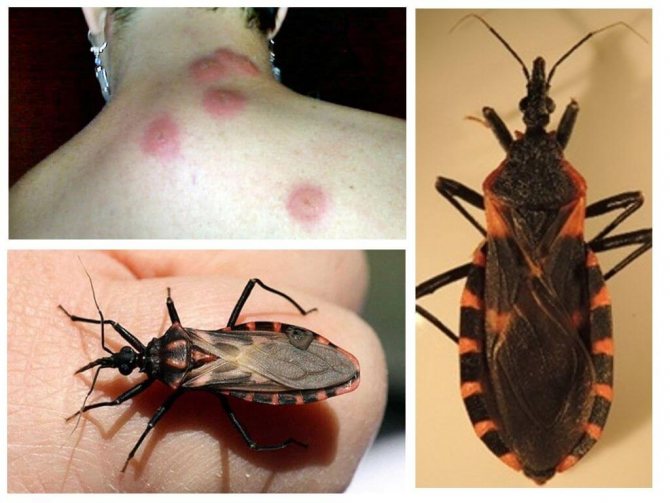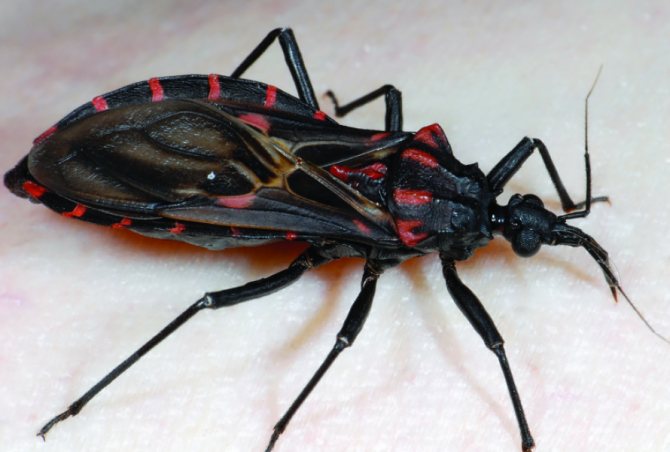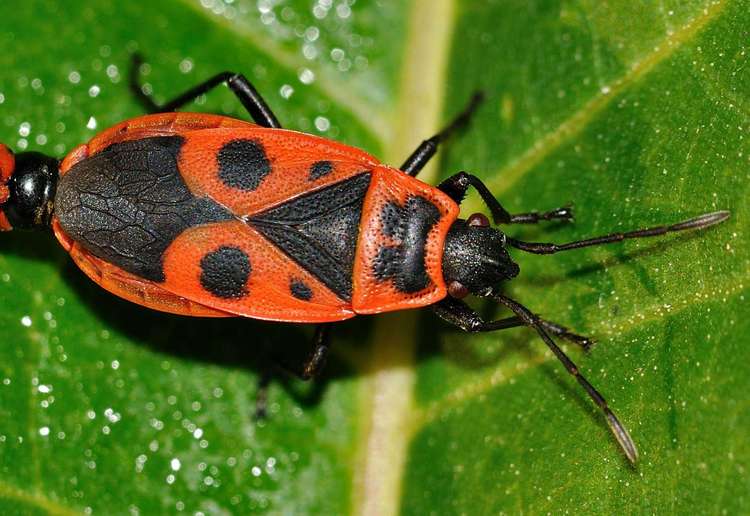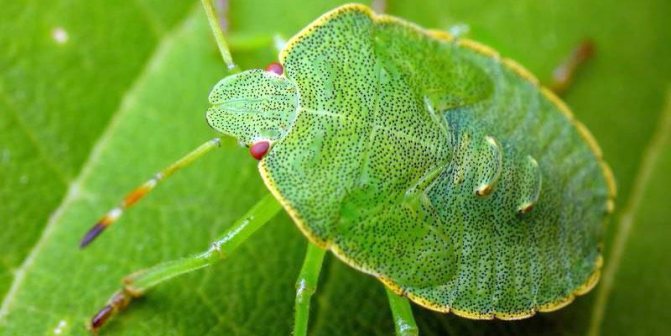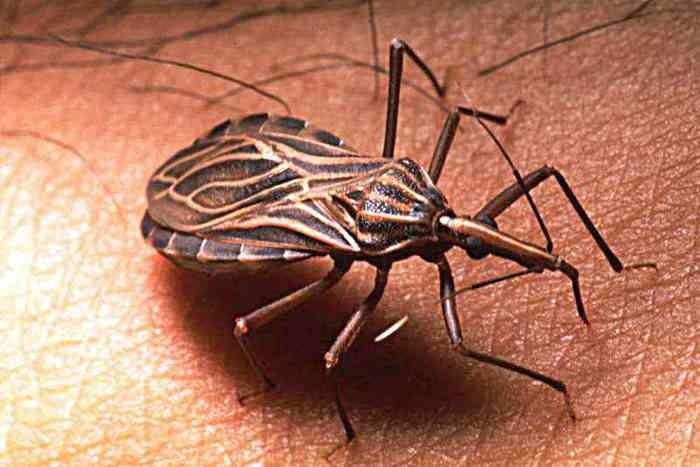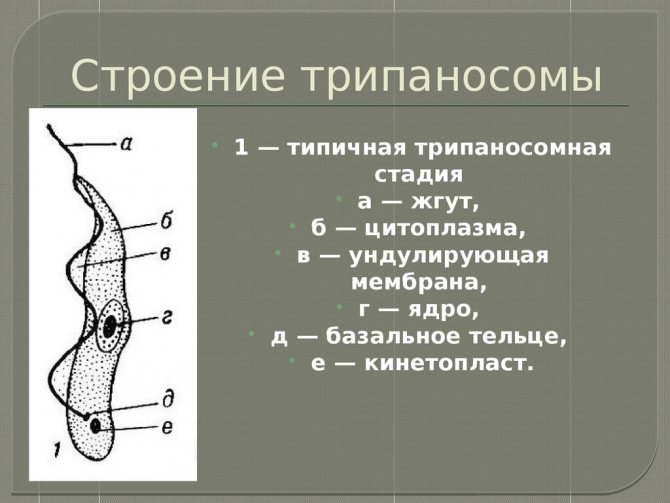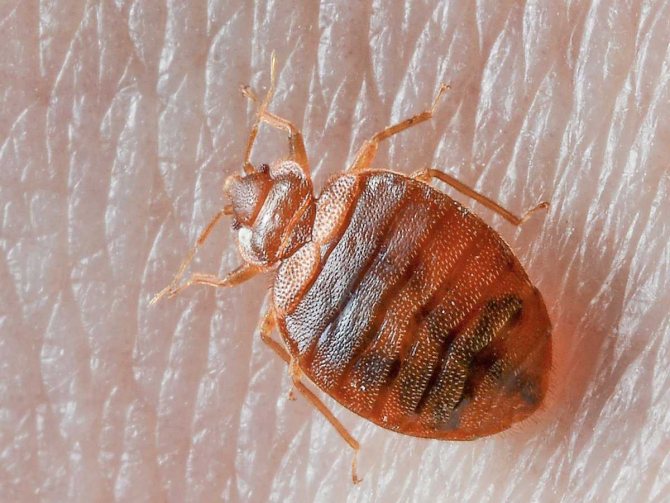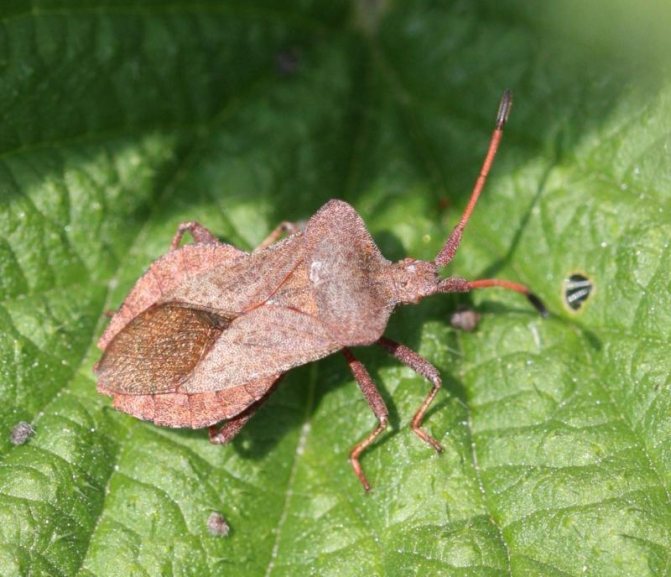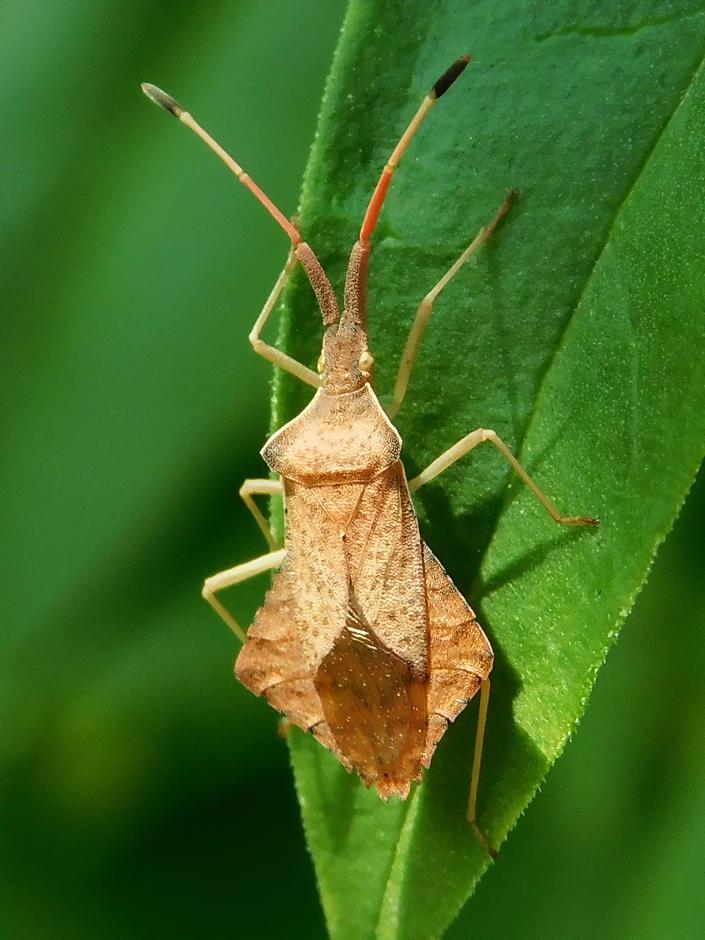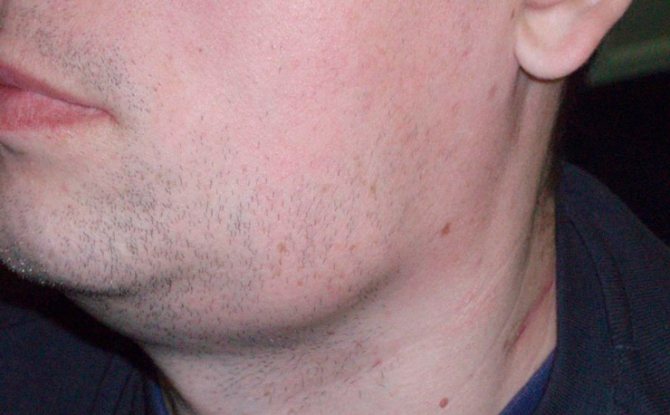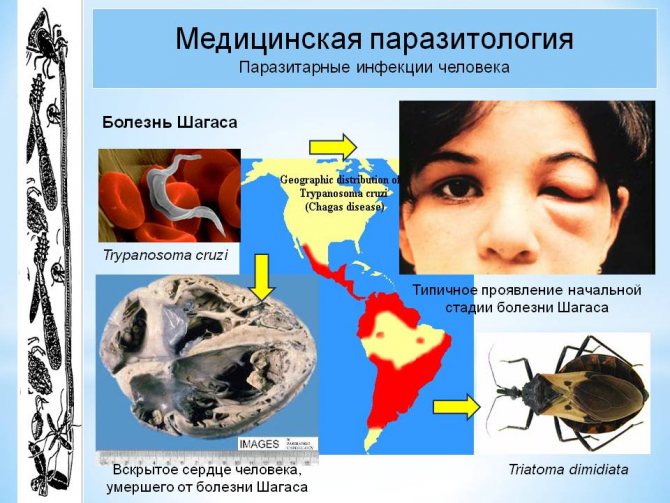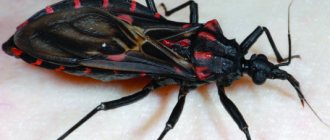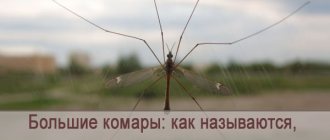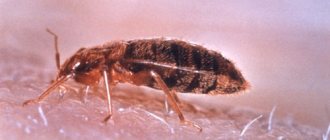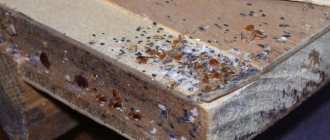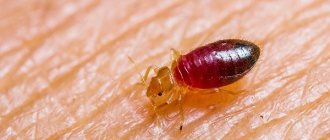Bedbugs are representatives of the Predator family; today, about 40 thousand species of these insects are known. Among this variety, there are varieties that can take a person's life. These include kissing bugs, or affectionate killers, so named for their unusual bite sites. The inhabitants of Russia are not afraid of these dangerous representatives of the fauna, they can only be found at exhibitions of exotic insects or during a trip to South America.
The killer bug is native to South America and carries Chagas disease
History
In the early 19th century, Charles Darwin made one of the first reports of the existence of triatomaceous bugs in America in The Journal and Notes (1839), commonly known as The Beagle's Journey.
In 1909, Brazilian doctor Carlos Chagas discovered that insects were responsible for transmitting T. cruzi to many of his patients in Lassance, a village on the banks of the San Francisco River, Minas Gerais, Brazil. The poor people living there complained about insects that bite at night. They called them barbeiros.
Life cycle
Bedbugs undergo incomplete metamorphosis. A wingless nymph of the first instar hatches from an egg, reaching 2 mm. Passes sequentially through the second, third, fourth, fifth age. At the fifth age, it turns into an adult, acquiring two pairs of wings.
Learn more Bedbug harmful turtle - photo, what it eats

Most of the species are associated with wild nesting vertebrates. They live in ground burrows with rodents, armadillos, in trees with bats, birds, sloths, and possums. Few (5%) live in human dwellings or surrounded by human homes, animal shelters.
general information
Triatom flying bugs are carriers of the pathogens of Chagas disease. When bitten, they transmit parasitic organisms called trypanosomes to humans. Experts say that about 8 million people in South America are affected by this disease and more than 12 thousand die because of it every year.
Characteristics of the area
The subfamily Dominatrices, or triatomaceous bugs, includes large and medium-sized insects that prefer to be nocturnal. All of them are active predators, therefore they eat smaller insects than themselves. They are also referred to as parasites capable of feeding on the blood of humans and animals.
These insects love warm regions and feel good at a temperature of + 20 ... + 30 ° С. In the wild, affectionate killers can be found in Central and South America: in Bolivia, Argentina, Brazil, Mexico, Chile and some US states. Intensive emigration of residents of some of these countries, as well as active tourism led to the fact that killer bugs began to be found in uncharacteristic habitats for them, for example, Texas and even Canada and Western Europe.
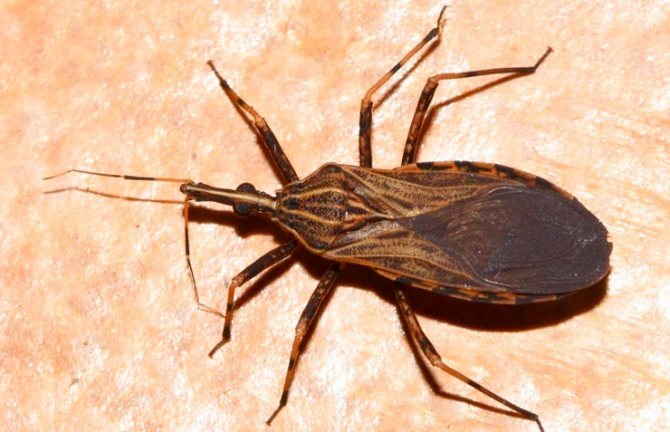

The killer bug only lives in warm regions.
This subfamily includes about 130 species of bedbugs. Most of them prefer to live in forests, where they settle in trees, in bird nests and rodent holes, but some species tend to settle closer to people and choose economic and residential buildings for this.
Insect description
Triatom bugs have an elongated body up to 2 cm in length.Their carapace is painted gray or black, and on the sides it is covered with orange and red spots. Adults move thanks to 3 pairs of legs and leathery wings. The oral apparatus is elongated, piercing-sucking, the thick trunk is very sensitive to infrared radiation. The parasite is not able to pierce the skin in dense places, so it chooses soft tissues near the eyes and lips.


The triatom bug is small in size and chooses places with soft skin for a bite
The head of affectionate killers is characterized by a conical shape. Since they are active only at night, this makes it easier for them to hunt, because insects attack sleeping animals and people. In the daytime, they rest in their dwellings under fallen leaves, in the grass or various crevices.
Development cycle
In summer, the female triatom bug lays eggs the size of a match head. They hatch small wingless nymphs, no more than 2 mm in length. To reach adulthood, they need to go through five molts. Each of them begins two weeks after consuming a large amount of blood, which the parasite feeds on at all stages of development. The life span of this insect is about two years.
It is not without reason that bedbugs start hunting only after sunset: when the ambient temperature drops, it is much easier for them to navigate in space and look for victims. Blood-sucking parasites have an excellent sense of smell and easily capture carbon dioxide produced during breathing, the smell of wool and hair, and ammonia released by the body of mammals. They are able to sense heat and are attracted to electric light.
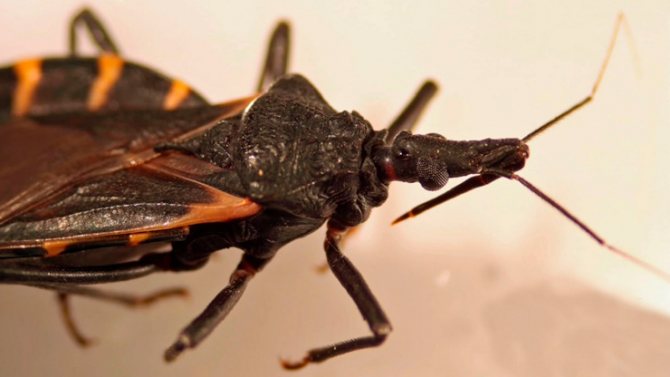

Killer bugs have an excellent sense of smell and are guided by electric light
During the bite, the affectionate killer injects an anesthetic into the skin, which prevents the person or animal from feeling pain and discomfort. The bug needs at least 15 minutes to get enough, and all this time his victim sleeps peacefully and does not even know about the danger.
Behavior
Kissing bugs accumulate in the apartment during the day and look for blood at night, when the owner is asleep and the air is cooler. Smells and heat lead insects to their hosts. Carbon dioxide released from respiration, ammonia, short-chain amines, carboxylic acids from the skin, hair, and exocrine glands of animals attract them.
Vision is needed for orientation. At night they fly into houses, attracted by the light.
Adult triatomaceous bugs give off an unpleasant odor (isobutyric acid) when touched. Able to make a special sound by rubbing the groove under the head (stridulation).
Epidemiology
Domestic and forest species transmit the Chagas parasite to humans, wild mammals. Birds are immune to the parasite. Disease transmission occurs from person to person by household kisses. From vertebrate to beetle with blood.
From beetle to animal, using insect feces, not saliva like most bloodsucking mosquitoes like malaria mosquitoes.
You can recognize the presence of a triatom bug in the house by its feces, eggs, adults. After ingestion of blood, insects show limited mobility and can be easily identified.
Modern treatment
In the acute stage, it is possible to treat patients with the modern drug nifurtimox made in the USA. Despite the fact that the agent reduces mortality, its effectiveness has been proven in only half of the cases. The main thing in treatment is early detection of the disease. The sooner you take the medicine, the better your chances of staying alive. In case of accidental infection in a laboratory or hospital, the drug should be taken immediately, without waiting for the test results.
Another drug that is effective in the acute stage of the disease is benznidazole. The drug does not cure the chronic form of Chagas disease.
How to protect your home
Synthetic pyrethroid insect sprays have been shown to successfully treat these pests. Consult a pest control specialist before using insecticides to kill triatom bugs.
Find out more Giant water bugs - where they live, how they bite
Cockroach traps and other "bait" formulations do not work against kissing bugs. Insecticide-treated mosquito nets and curtains kill these insects.
Other precautions to take to prevent infection at home:
- Seal cracks, crevices around windows, walls, roofs, doors;
- Use screens on doors, windows;
- Make sure pets sleep indoors, especially at night;
- Keep your home and outdoor pets clean. Check them periodically for parasites.
How to determine if a found insect is a kissing bug?
There are many beetles that resemble triatomine beetles. Examples are shown in the figure. They do not feed on human blood, but prey on other insects. Some feed on plants (leaf beetles). Not carriers of Chagas disease, usually confused with triatoms.
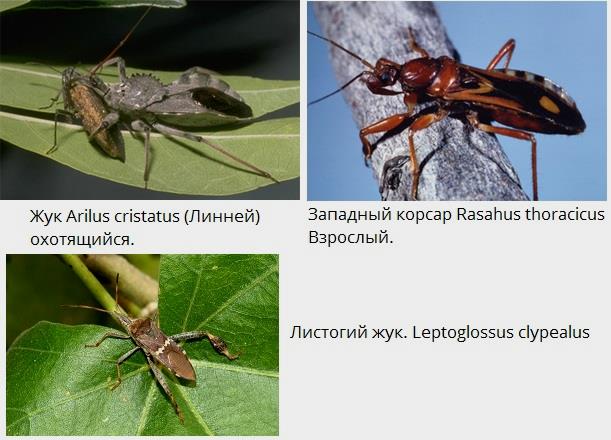

If you are not sure whether the detected bug is a kissing bug, consult an expert entomologist for clarification.
Could you be allergic to the bite?
Yes. The saliva of triatomine bugs causes an allergic reaction in some people. It is accompanied by severe redness, itching, swelling, scars, urticaria.
Less commonly, anaphylactic shock (severe allergic reaction) occurs. People with a history of anaphylactic shock should consult a doctor to obtain medications for use with a kiss bug bite.
It is important to note that not all insects are infected with the parasite, although saliva can cause allergies.
Learn more Bed bug bites - signs and treatment
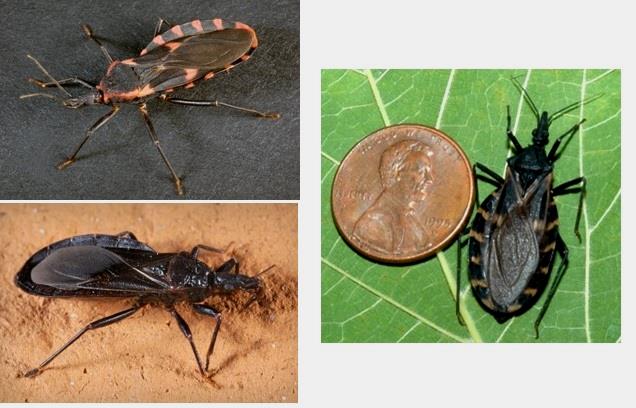

An allergic reaction after being bitten by a triatomine bug does not mean that you have contracted the parasite that causes Chagas disease. Swelling that can develop at the site of the bite is called hagoma.
When the parasite enters the body through the eye, the swelling around is called the Romagna sign. Hagomas, including the Romagna symptom, last longer than an allergic reaction and are less likely to cause severe itching.
Key Features
The color of the bug is quite faded. The body is elongated, the size is about 2 centimeters. There are small wings, which the insect rarely uses. The head is small, conical.
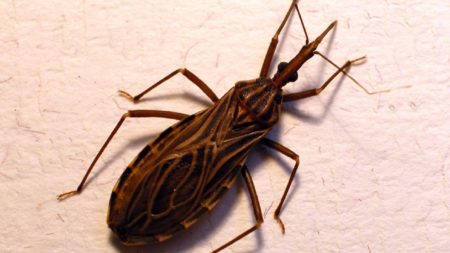

It differs from the bed pest in the presence of a mouth, as well as the "elongation" of the legs. Another difference is the larger size. The appetites of such a bug are more modest, it drinks a relatively small amount of blood when bitten.
The female lays eggs only with the onset of warmth. First, a nymph appears, and four molts later she transforms into an adult. The pest feeds on blood throughout its life, starting from the "infancy" age.
The bug begins to eat when it is completely dark. This miniature killer finds the power source thanks to its unique sense of smell. The food apparatus has a special structure. Against this background, the bug is not able to bite through thick areas of the skin. That is why the ectoparasite chooses the "kissing zone".
Pay attention! The pest produces a powerful anesthetic. This makes his bite painless even when the person is asleep.
Having "anesthetized" the victim, the bug is saturated with blood in complete safety for itself. The duration of his "meal" is 20-30 minutes.
What if I think I have Chagas disease?
If you suspect you have Chagas disease, talk to your doctor. Symptoms are varied, diffuse, and can be caused by other medical conditions.Acute Chagas is fatal, especially for children, and chronic depletion of a person for many years.
The main features are:
- constipation;
- malaise;
- feeling of constant tiredness;
- inability to swallow;
- fever;
- stomach ache.
These symptoms are caused by the microscopic pathogen Trypamosoma cruzi, a protozoan parasite. It is transmitted to humans through triatomaceous bugs, which are found in poor areas with unsanitary living conditions. The parasite affects the heart, colon, esophagus.
Features of pathology
It is a parasitic disease. There is no vaccine at the moment, and according to WHO representatives in Latin America, the situation will not change in the near future.
According to statistics, today up to 8,000,000 residents of Mexico, Argentina, and some regions of the United States are infected. There is also unofficial statistics that say that in fact there are 2 times more cases.
The disease kills 40-48 thousand people annually.
Important! The bite itself is not dangerous.
The threat to life lies in the excrement of the bug. The bite site itches a lot. When the victim combs it, intracellular parasites penetrate inside. Once in a fertile environment, trypanasomes multiply rapidly.
At the initial stage, the following symptoms are present:
- headaches,
- swollen lymph nodes
- increase in overall temperature,
- swelling of the bite site.
Untimely access to a doctor threatens the transformation of pathology into a chronic stage. On average, this happens over a period of 2.5 months.
The danger of the disease lies in the fact that in 60-70% of cases it goes unnoticed at first. In 25-30% of people, an increase in the ventricles of the heart is observed for several years. The result is the development of heart failure.
Phases of pathology
In total, the disease provoked by the "kissing beetle" has two phases:
- chronic (symptoms appear within 2 decades),
- acute (proceeds quickly and aggressively, within 2-4 months after the bug attack).
Forms of the disease
The duration of the incubation period is 6-13 days. The bite site swells, a blister appears, similar to a large boil. There is no purulent discharge.
The temperature rises to 40 degrees. The person is constantly shivering and feverish.
The duration of the acute stage is 30-90 days. This moment is the most favorable for diagnosis. Then treatment is prescribed.
Signs:
- cramping in the abdomen,
- chest pain
- shortness of breath
- muscle pain,
- rapid heartbeat.
Signs of chronic trypanosomiasis
Main manifestations:
- decreased appetite (sometimes after a meal a person begins to stir up and vomit),
- increased muscle pain
- dizziness,
- swelling of the upper and lower extremities,
- loss of consciousness (observed in extremely severe cases).


A person bitten by a bug complains of constant weakness, tremors in the limbs. Sometimes insomnia develops, but more often the patient suffers from drowsiness.
Therapy should be started as soon as possible - this is the only way to save the victim's life.
Prophylaxis
To prevent meeting with these parasites, it is necessary to secure the entrance to the house. Make sure the outside doors are tightly closed. Replace missing or damaged mosquito nets. Repair damaged screens on all windows, vents, attics.
Close the gaps around the openings for utility lines, water pipes, cables. Repair cracks in the foundation that could allow insects to enter.
Remove all wild bird nests. Move firewood away from home. Swap out your porch lighting for insect lamps. Check your pets to make sure they don't have these bugs in their fur.
Using external insecticides can help keep triatom bugs out of your home.
Habitat
Kissing bugs live on continents and in countries with hot climates: in South and North America, Mexico, Bolivia, Chile, Argentina, Brazil, etc. Due to the frequent emigration of citizens, insects began to appear in Canada, Texas and some countries in the western part Pacific Ocean.
Killer bugs live where it is warm, choosing more sheltered places. They prefer to be located next to people or animals in order to freely go hunting at night. Sometimes they were found in clay shacks, in the burrows of possums and tree rats.
Does Russia live
In Russia, this predatory species of bedbugs does not occur. However, tourists should take precautions when traveling to hot countries, since these insects are carriers of a deadly disease.

